Pimples on the tongue can be caused by bacterial, viral infections, physical damage, and allergic reactions. Each neoplasm has its own causes, treatment methods and methods of prevention.
Types of acne
Pimples in the oral cavity can vary in appearance and causes. It is worth paying attention to the most common ones.
Papillitis
Inflamed and swollen papillae of the tongue are called papillitis.
The causes of occurrence are always external stimuli:
- An unsuitable toothbrush;
- Acidic or alkaline effects on the oral cavity;
- Burns from boiling water;
- Irritation from foods, such as frequent consumption of candy;
- Frequent heartburn and acid reflux from the stomach;
- Tongue biting injuries;
- Cuts on the tongue from a chipped tooth or filling;
- Injuries to the tongue from rough food, such as fish bones.
To combat papillitis, it is enough to eliminate the cause and treat with an antiseptic for 2-3 days. Healing occurs on day 2, provided that the inflammation is not a consequence of infection.
Infectious inflammation is called glossitis.
Glossitis
Degenerative changes in the tongue, its hardening, bleeding ulcers, bad breath, heavy plaque - all these symptoms indicate the disease glossitis caused by infection.
- Bacterial contamination of the oral cavity;
- Iron-deficiency anemia;
- Vitamin deficiency, in particular lack of B vitamins;
- Lichen planus;
- Syphilis, etc.
To combat glossitis, studies are prescribed to clarify the cause. After this, the patient usually undergoes a course of antibiotic therapy or antiviral drugs. For topical use, it is recommended to use antiseptics, manganese solution, miramistin, chlorhexidine, furatsilin at the patient's choice.
If a lack of vitamins or elements (iron) is detected, a course of multivitamins and iron supplements is prescribed. Sometimes injections or tablets of B vitamins, the administration of which must be prescribed by the doctor, since when taken simultaneously with certain foods, the vitamins are not absorbed.
Contaminated mucous membrane – stomatitis
Small ulcers on the tongue, cheeks, and the inside of the lips that itch, hurt and interfere with chewing food. They usually occur due to contamination of the mucous membrane in young children, when licking toys, or against a background of weakened immunity. However, it also occurs in adults.
- Oral contamination from toys in children;
- Smoking and alcohol abuse in adults;
- Weakened immunity after suffering a viral infection;
- Injured mucous membrane.
Treatment usually consists of antiseptic treatment of the mouth. If the child is small and cannot rinse his mouth, then it is necessary to lubricate the oral cavity with a swab or cotton pad soaked in antiseptic. They also carry out procedures that strengthen general immunity: walks in the fresh air, sunbathing, taking multivitamins, a nutritious varied diet, and sufficient fluid intake.
Aphthous stomatitis
Manifested by the appearance of extensive ulcers in the oral cavity. It is also called geographical, since the lesions resemble a map. Bacterial causes of these lesions have not been identified. Typically, lesions occur as a result of allergic reactions, vitamin or mineral deficiencies, a general decrease in immunity, hereditary predisposition, diseases of the gastrointestinal tract, and defects of the hematopoietic system.
If there is no improvement within three days of antiseptic measures, then a visit to the doctor is essential.
Candidiasis. Fungal stomatitis (thrush)
A fungal disease, commonly referred to as thrush. It occurs in both adults and children. The latter become infected exclusively through contact with the mother, through the birth canal or infected nipples, during breastfeeding.
It has symptoms: dry mouth, itching and burning, a white coating under which red tumors are localized, which sometimes bleed.
In children, it is usually sufficient to treat the oral cavity with a soda solution (pour one teaspoon of soda into a glass of boiling water, stir and cool).
For adults, it is necessary to take a course of antifungal drugs, such as pimafucin, clotrimazole, Diflucan, and others. It is very important not to stop taking the drug, even if there is improvement. This threatens the strengthening of the fungus and the return of lesions on a larger scale. For adult carriers of the fungus, it is necessary to undergo treatment together with a sexual partner to avoid a recurrence of symptoms.
Viral infections and STDs
Painful oral rashes can be caused by viral infections and sexually transmitted diseases (STDs). This can be either the herpes simplex virus, or HIV infection, gonorrhea, chlamydia, or syphilis.
It is very important to treat these diseases without turning them into a chronic form, otherwise they cannot be completely cured, and it is only possible to stop exacerbations.
So, for example, with syphilis, the incubation period is 14-50 days, during which time a pimple with rough walls appears in the place where the infection has penetrated, including in the mouth; it goes away, on average, after 30 days, becoming chronic. and, if no action is taken, subsequent manifestations affect the central nervous system and lead to death.
If you are infected with an STD, you must contact a venereologist, who will prescribe the treatment necessary in a particular case.
Oral cancer
Neoplasms in the mouth, which in the early stages present as small ulcers, can be easily confused with ordinary stomatitis. At first, the discomfort is local, however, if the symptoms are ignored, the pain can intensify and radiate to the head and ears.
If left untreated, a malignant tumor grows and interferes with leading a normal lifestyle. Makes swallowing difficult and increases salivation.
There are no specific reasons for the formation of cancer. But there are indirect factors that increase risks:
- Smoking;
- Alcohol abuse;
- Systematic injury to the oral mucosa with dentures, fillings, and rough food;
- According to statistics, men over 60 years of age, smokers, and people who regularly consume spicy foods are more susceptible to oral cancer.
Treatment is prescribed depending on the stage at which the patient consulted an oncologist; most often it is radiation therapy, chemotherapy, and, in extreme cases, surgery to remove the tumor.
Kawasaki disease
A disease with an acute course and high fever, most often affecting children under 10 years of age. The main causes of occurrence have not been identified, but based on observations, it has been noted that children of the Asian race are more likely to get sick. The causes of the disease include the following:
- Staphylococcal infections;
- Streptococcal infections;
- Viral infections (herpes, Epstein Barr and others);
- Genetic predisposition.
The symptoms of the disease are extensive, when the body is affected, the temperature rises and lasts for several days, enlarged lymph nodes in the neck, swelling of the tongue and lips, aching joints, severe deterioration in the functioning of the cardiovascular system, possible appearance of arterial aneurysms and myocardial infarction are noted. The disease is dangerous due to complications on the heart and central nervous system.
Treatment consists of intravenous gamma globulin and aspirin during the recovery phase and in subsequent years. Aspirin is prescribed to reduce the risk of blood clots and the drug is not stopped until the aneurysm shrinks or goes away completely. Treatment takes place in a specialized clinic.
Scarlet fever
Streptococcal infection, which is accompanied by suppuration of the tonsils (sore throat), a red rash, swelling of the tongue, and high fever.
The tongue when affected by scarlet fever is bright burgundy, the rash is all over the body, which disappears without a trace on the 3rd day after its appearance. This is a reaction to a toxin formed during the breakdown of streptococcus in a child’s body.
Treatment is traditional, using antibiotics. Antiseptics are used locally.
If treatment is not started in a timely manner, complications occur, the walls of blood vessels become thinner, which can cause hemorrhage anywhere in the body and in the brain. The liver, adrenal glands and kidneys can also be affected by purulent inflammation. If treatment is delayed, pneumonia may develop.
Causes of appearance depend on the location and color of acne
Depending on where pimples are located in the oral cavity, you can understand the reason for their appearance, but only a doctor can accurately diagnose based on laboratory tests of smears from the mucous membranes.
Under the tongue
If pimples appear under the tongue, this may indicate candidiasis, allergies, or herpetic infections. And also indicate diabetes mellitus, or a lack of B vitamins.
On the side
Pimples on the side of the tongue can also indicate viral infections, cancer pathogens, or mechanical damage.
Pimples on the tip
Most often, this is stomatitis caused by injury from rough food, such as seeds. Herpes is also possible.
Pimples on the root of the tongue
Infectious pimples such as streptococci are usually localized at the root. Possible sore throat, scarlet fever.
Yellow pimples
Yellow pimples, especially those with purulent contents, most often indicate the venereal nature of their appearance; it is necessary to consult a venereologist.
White pimples
Caused by candida fungus and require treatment for thrush. It may appear after mechanical trauma or biting.
Red pimples
Red pimples may indicate Kawasaki disease, herpetic rashes, and frequent consumption of spicy, hot foods. For frequent burns of the mucous membrane.
Black pimples
May be caused by cancerous lesions, or irritation when the tongue is pierced.
How to quickly get rid of acne, remedies and treatment
To quickly get rid of unpleasant sensations, you should use a simple rinsing method. For candidiasis, an alkaline solution, for all others, antiseptic liquids are suitable, except for peroxide, it dries out the mucous membrane. Furacilin, miramistin, chlorhexidine have proven themselves in eliminating unpleasant symptoms.
Healthy and balanced diet
When treating acne on the tongue, you must adhere to a diet that excludes rough foods, spicy, salty, and excessively hot dishes. And any products that can injure the oral mucosa.
Avoid smoking, as it provokes not only bad breath, but also cancerous tumors, necrosis of the papillae, which subsequently leads to inability to distinguish tastes.
Is it possible to treat acne on the tongue on your own?
In case of minor changes in the mucous membrane and errors in nutrition or damage to the mucous membrane, you can rinse the mouth with antiseptics and follow a “soft” diet for a couple of days, however, if neoplasms appear without objective reasons, it is necessary to show the pimples to the doctor, since early diagnosis of the disease leads to recovery in the vast majority cases. With extensive lesions, self-medication cannot be done. And the sooner the doctor prescribes treatment, the sooner recovery will occur.
Pimples on the tongue are familiar to many. They are painful, cause discomfort and cause suffering. In fact, they are easy to treat and do not cause complications. A pimple on the tongue can appear for many reasons, most often due to microtrauma of the tongue, stomatitis or herpes. We will tell you why white, red and pink pimples appear on the tongue, as well as how to cure them.
Content:
What it is
If a pimple appears on the tongue, the main thing to understand is that, in principle, there cannot be pimples on the tongue, since there are no sebaceous glands on it. Those formations that are mistaken for pimples are not actually pimples - they are not filled with purulent exudate. Essentially, these are small swellings and ulcers on the surface of the tongue. They are called "pimples" because they are very similar. They are white, pink, red, yellow, depending on the complexity of the disease and the cause of formation.
Small pimples are very painful, they interfere with eating, talking and even bother the patient at rest. Let's try to figure out what to do, how to cure it, as well as what they are and why they appear.
White pimple
White pimples most often appear as a result of stomatitis or candidiasis. Since these two diseases are treated completely differently, you should consult a doctor at the first symptoms in order to correctly diagnose and prescribe treatment.
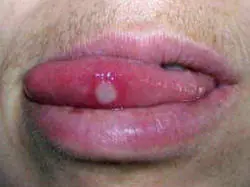
Candidiasis is characterized by white pimples and a coating on the tongue, which in appearance resembles cottage cheese and covers the entire surface of the oral cavity. There are also white pimples on the base, tip and under the tongue. Sometimes the entire surface may be covered with small pimples and a cheesy coating.
Diagnosing candidiasis is not difficult - if you wake up in the morning and find plaque and pimples on your tongue, you have every reason to suspect the presence of candidiasis or thrush. You should consult a doctor to confirm the diagnosis and prescribe treatment.
With stomatitis, small pimples appear on the tongue. There are usually many of them, they can merge with each other. These small white pimples at the tip or root, at the base or underneath are very painful and itchy. The pain intensifies after eating.
Without proper treatment, stomatitis will not go away on its own; you need to see a doctor to confirm the diagnosis and prescribe treatment. As a rule, it consists of antiseptic treatment of the surface of the oral cavity and lifestyle correction, since the main cause of stomatitis is insufficient oral hygiene.
Red
Red pimples on the tongue are the main sign of glossitis, an inflammatory disease. Outwardly, they look like inflamed red dots that hurt and irritate.
Glossitis can appear for many reasons:
- allergic reaction;
- eating too hot and spicy food;
- alcohol abuse;
- presence of the herpes virus.

A red pimple on the tip of the tongue can also be the result of a burn from too hot food. The papillae on the surface of the burn become greatly enlarged and swollen, outwardly it looks like a pimple. After a few days everything returns to normal.
With an allergy, many red pimples form on the surface of the tongue, which itch and cause anxiety.
With the herpes virus, a red pimple may not be the only manifestation of the disease; usually the entire surface of the oral cavity is affected.
Yellow
The appearance of yellow pimples on the tongue is usually not an independent disease. Often with stomatitis or candidiasis, the coating on the surface of the tongue takes on a yellowish rather than white tint. It all depends on the individual characteristics of the body. In addition, determining the shade is an individual matter. Therefore, yellow pimples most often also mean either candidiasis or stomatitis. To eliminate any doubts, consult a doctor; he will be able to determine for sure what disease you have encountered.
Pink
Pink pimples on the tongue, like yellow ones, are not an independent disease. Usually they are an early stage of glossitis, when the inflammatory process has not yet reached its peak. At the initial stage of the disease, they have a light pink tint, which after a few hours will turn intense red. Considering the fact that the disease is easier to treat at an early stage, if pink acne appears, you should immediately consult a doctor for advice.
Why do they appear?
As already mentioned, there are no sebaceous glands on the tongue, so “pimples” cannot appear on it in principle. After all, a pimple is an inflammation of the sebaceous gland. But the bumps and nodules that sometimes appear on the surface are very similar in appearance to pimples, which is why they got that name. Pimples under the tongue or on the tip cause a lot of trouble and are extremely painful. Let's consider the reasons for their appearance.
Mechanical damage
Often, in the process of chewing or biting food, we bite our tongue, resulting in a slight mechanical injury. The risk of surface damage increases when consuming hard foods with sharp edges (crackers, chips, seeds). A small painful swelling or bump forms at the site of the injury, which after some time turns into a white pimple. The pain intensifies while eating. With severe mechanical damage, slight swelling may occur.
You should exclude spicy and hot foods from your diet, carefully monitor oral hygiene, and after a few days the pimple will disappear on its own.
Allergic reaction
The appearance of pimples on the tongue may indicate an allergic reaction to food, medicine or toothpaste. In this case, small white pimples and sores form, which hurt and irritate when eating or drinking liquid.
If your doctor suspects an allergy, it is very important to identify the allergen and eliminate it from your diet. First of all, you should stop chewing gum, change toothpaste and tooth elixir - you may be allergic to oral hygiene products. If these measures do not bring the desired result, you need to analyze whether you have recently taken medications. Pimples on the tongue after antibiotics and other medications are a common occurrence. In this case, you should consult your doctor and stop taking the drug or try replacing it with another one.
If the cause of acne is a food allergy, you need to track what foods they appear after and eliminate these foods from your diet.
Stomatitis
Stomatitis is a common cause of white or red pimples on the surface of the tongue. The main cause of stomatitis is insufficient oral hygiene, exposure to pathogenic bacteria on the mucous membranes due to dirty hands, unwashed fruits and vegetables. Most often, children suffer from stomatitis, because they tend to put everything in their mouth.
With stomatitis, small white, pink or red pimples appear on the surface of the tongue and other mucous membranes of the mouth, which burn, irritate and hurt not only during eating, but also at rest. It is sometimes difficult not only to eat, but also to talk or simply swallow saliva. Small pimples under the tongue or at the root cause severe discomfort.
At the first suspicion of stomatitis, you should consult a doctor, he will prescribe medications that relieve itching and soreness of the tongue, as well as promote the speedy healing of ulcers and pimples.
Herpes
The herpes virus most often affects the area around the lips. However, this is not the only place where it is localized; herpes can affect all mucous surfaces of the human body, including the oral cavity. In this case, one or more watery pimples may appear on the tongue and inner surface of the cheeks. Many people do not pay enough attention to the herpes virus, believing that it will go away on its own. In fact, this is not such a harmless disease.
Without proper treatment, herpes can eventually affect the entire body, including the brain. Therefore, if you have a herpes virus, you should consult a doctor and undergo a course of antiherpetic therapy.
Poor nutrition
If you eat too much spicy and hot food, inflammation of the tongue, or glossitis, may occur. The papillae on the surface of the tongue are constantly irritated by hot or spicy foods, which leads to their inflammation. If your diet constantly contains spicy foods, inflammation can become chronic.
Drinking alcohol in large quantities, as well as smoking, can cause inflammation of the tongue. Therefore, when the first problems appear, you should immediately try to get rid of bad habits.
Pathologies of the patient's internal organs
Pimples on the surface of the tongue can be a manifestation of various diseases, including candidiasis or tuberculosis. Therefore, you should not take the appearance of small pimples lightly. Be sure to monitor their behavior. If a pimple does not go away for a long time, be sure to consult a doctor.
Weakened immunity
If the immune system is weakened as a result of a previous illness or due to a lack of vitamins and microelements, small painful pimples may appear on the surface of the tongue. If there are no other reasons for their appearance, you should contact an immunologist to check the state of the immune system. If malfunctions are detected in its functioning, it is necessary to take immunomodulators, as well as drugs with lactobacilli to normalize intestinal function and correct the activity of the immune system.
What to do
The human oral cavity is home to many bacteria, both beneficial and pathogenic. They have both negative and positive effects on the human body. Pathogenic bacteria cause inflammatory processes, including glossitis, or inflammation of the tongue. Often patients notice a white pimple that reacts with pain to every touch. In fact, this is not a pimple, but an inflamed nodule. In medicine, such inflamed nodules are called glossitis.
A transparent pimple under the tongue can occur as a result of mechanical damage or as an allergic reaction to chemical and food irritants.
You can get rid of glossitis only through comprehensive measures. The first step is to consult a doctor to determine the true cause of its occurrence. The oral cavity should be kept clean, preferably rinsed with a soda solution or a decoction of St. John's wort. It is also necessary to strengthen the immune system and limit the consumption of spicy and too hot foods so as not to irritate the inflamed nodule.
Location: on the base
Pimples at the base of the tongue interfere with swallowing and even speaking, they hurt and cause a lot of trouble. The reasons for their appearance can be very diverse. It could be stomatitis, a fungal infection, a sore throat or pharyngitis. Only an experienced doctor can make a correct diagnosis. We can only suggest what you should pay attention to.
If a pimple appears on the base of the tongue, you should carefully analyze other symptoms - fever, enlarged lymph nodes, the presence of allergic reactions. For example, with a sore throat, pimples form near the throat quite often. They are painful, make swallowing difficult and cause pain when talking. In this case, the patient also has enlarged tonsils and submandibular lymph nodes, and an elevated temperature. As a matter of fact, acne and fever almost always occur either with a sore throat, or with tonsillitis or pharyngitis.
It is undesirable to ignore pimples on the tongue near the throat, since in particularly advanced cases they can interfere with breathing, which can lead to suffocation. Therefore, having discovered them in yourself, you need to contact an ENT specialist to make a diagnosis.
Location: at the tip
A white pimple on the tip of the tongue can appear at the site of a microtrauma as a result of an infection entering the wound. Fans of chips, seeds, pistachios and other nuts are especially susceptible to developing pimples on the tip of the tongue. Solid foods scratch the delicate tip of the tongue, causing pathogenic bacteria to enter the wound, causing it to become inflamed and painful.
Often a pimple occurs due to an exacerbation of the herpes simplex virus against the background of decreased immunity. In this case, strengthen your immune system and take vitamin complexes. But in any case, consult a doctor and get tested to make an accurate diagnosis.
Also, a pimple can pop out due to chronic stomatitis. If the patient has a weakened immune system and has carious teeth, persistent infection in the oral cavity sooner or later leads to stomatitis. Without timely treatment, it can become chronic, periodically exacerbating.
Pimples on the tongue are an unpleasant phenomenon that can significantly worsen a person’s quality of life.
Rashes in the mouth are usually accompanied by discomfort when talking and eating, and you have to avoid sour and spicy foods altogether, as eating them causes severe pain. What to do when a pimple suddenly appears on the tongue, how to treat the disease and prevent the problem in the future?
Why do pimples appear on the tongue?
The appearance of the tongue is a kind of “mirror” that reflects the state of the body and human health, so any changes, including acne, usually indicate internal problems. The list of reasons that cause rashes on the tongue includes:
- infectious and inflammatory diseases of the oral cavity (stomatitis, herpes, candidiasis, glossitis);
- mechanical damage and trauma to the mucous membrane;
- vitamin deficiency and unhealthy diet (unbalanced diet, abundance of spicy, pickled, salty and hot foods);
- bad habits, including smoking and drinking alcohol;
- allergic reactions, most often to food;
- diseases of internal organs and systems;
- decreased immunity;
- taking certain medications.
Depending on the factors that caused the disease, rashes on the tongue have characteristic features. They can be white, red, yellow or pink, accompanied by additional symptoms (pain, burning, fever, etc.) and localized in different areas of the mucous membrane.
Thus, the body’s reaction to allergens is manifested by small reddish or pinkish rashes, the surrounding skin swells and becomes inflamed, and when tissues are injured, reddish pimples with watery contents appear, which, when touched, cause acute pain.
Rashes as a sign of stomatitis and other diseases

The activity of pathogenic microorganisms is the most common cause of pimples on the tongue.
The causative agents can be bacteria, viruses or fungi that cause stomatitis, candidiasis, glossitis, gingivitis and other diseases.
The rashes in this case, as a rule, are extensive and look like white ulcers with purulent or serous contents.
They are accompanied by serious discomfort, pain and burning when eating, and in severe cases, fever, weakness and poor health. As the pathological process develops, acne spreads throughout the cavity, bad breath, loss of appetite and digestive problems appear.
At the first manifestations of infectious diseases of the oral cavity, you should consult a doctor as soon as possible - self-medication and incorrect selection of medications can cause a worsening of the condition.
How to quickly cure with medications
Diseases accompanied by pimples on the tongue are most often treated with local medications containing substances that destroy bacteria, viruses and fungi. In addition, most of them contain painkillers, anti-inflammatory and regenerating components that help eliminate the symptoms of the disease and restore affected tissues.
Antibacterial ointments and sprays
These medications are used to treat stomatitis, glossitis, gingivitis and other inflammatory processes caused by the proliferation of bacteria in the oral cavity.
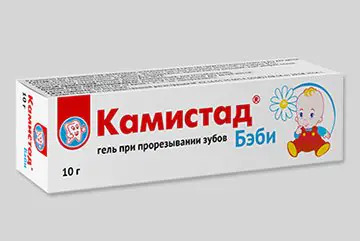
The most common medications include:
Antimicrobial drugs can be replaced with brilliant green, fucorcin or iodine, which also cope well with pathogenic microorganisms - the solution is applied to a cotton swab and spot-treated acne.
Rinsing the mouth with antiseptics
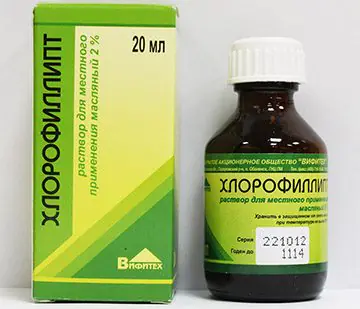
Antiseptic solutions are used as part of complex therapy for infectious diseases of the mouth and throat - they disinfect affected areas and stop the proliferation of pathogens.
The most accessible and popular remedy is Furacilin - one tablet should be dissolved in a glass of warm boiled water, then rinse your mouth well.
In addition, you can use Chlorhexidine, Miramistin, Chlorophyllipt, Tantum Verde - they are available in the form of solutions that need to be used in pure form or diluted with water, depending on the description and instructions for use.
Antifungal drugs
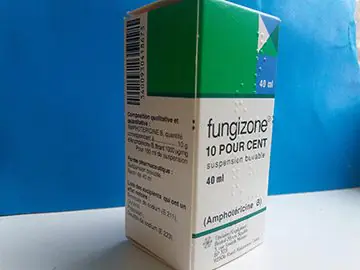
In most cases, rashes on the tongue are caused by fungi of the genus Candida - when they multiply, a disease called candidiasis, or simply thrush, develops.
In addition to oral pimples, its symptoms include a white cheesy coating, severe discomfort, inflammation and itching.
The most effective antifungal drugs are Nystatin, Sodium Tetraborate, Fungizone, and the dosage and duration of the course depend on the stage of the disease, age and characteristics of the body.
Antiherpetic treatment
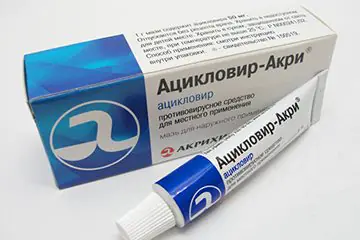
The herpes virus most often affects the lips and the skin around them, but the rash can also be localized on the tongue.
Inflammations with this type of infection are treated with Acyclovir, Famciclovir, Valacyclovir and other drugs.
Sometimes Interferon is additionally required, and antipyretic and painkillers are used for symptomatic therapy.
How to get rid of it using folk remedies

At home, pimples on the tongue can be treated by rinsing with decoctions of medicinal plants - chamomile, sage, oak bark, St. John's wort, calendula.
They have anti-inflammatory and analgesic properties, which eliminate the symptoms of the disease and prevent the proliferation of pathogenic microorganisms.
You can make ice cubes from herbal infusions and dissolve them in your mouth 2-3 times a day.
Essential oils of clove, rose hip, peach, grape seed and tea tree have a good effect. If these products are not available, you can simply rinse your mouth with a soda solution and lubricate the affected area with a thin layer of toothpaste or honey.
If a white pimple on your tongue hurts, what to do?
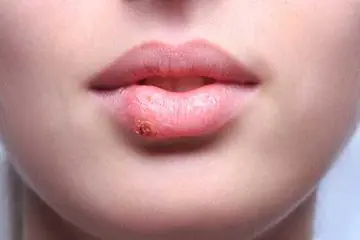
A white pimple that appears on the tongue most often indicates stomatitis (especially if it has purulent contents), but may indicate herpes, candidiasis and other diseases.
First of all, you should rinse your mouth with an antiseptic or herbal decoction, and then treat the affected area with an antimicrobial, antiviral or antifungal drug; in the absence of such drugs, you can use one of the folk remedies.
In addition, you should exclude sour, spicy, salty and hot foods from your diet, stop smoking and carbonated drinks, as they irritate the mucous membranes and contribute to the deterioration of the condition.
What to do to remove pimples on the tongue of a small child
Self-medication is strictly not recommended, since many drugs used to treat infectious and inflammatory diseases of the oral cavity have contraindications due to age.
Before visiting a doctor, you can eliminate the symptoms of the disease using an ointment or gel for teething (Cholisal, Kalgel, Kamistad, etc.) - they have an anti-inflammatory, analgesic and antiseptic effect, and will temporarily relieve the child of unpleasant symptoms.
Pimples on the tongue can cause a lot of trouble and suffering, but with proper treatment you can get rid of them in the shortest possible time. Subsequently, you need to carefully maintain hygiene, eat right, strengthen your immune system, and rashes in the oral cavity will forever remain a thing of the past.



